|
I recently came back from a summer vacation to England and Scotland. Whenever friends and family have asked about my favorite part of the trip, I always say the Scottish Highlands and English Lake District. The beauty of the tall mountains with peaks hidden in the clouds and covered in the brightest green foliage takes your breath away. Peering up at these magnificent stone crags with my head tilted back to face the sky, I couldn’t help but mutter a continuous, “Wow!” The first thought that entered my head was the lyric from the song “Shoulders” by the Christian band For King and Country: I look up to the mountains / Does my strength come from the mountains? / No, my strength comes from God / Who made heaven, and earth, and the mountains. The entirety of my trip, I saw God in simple things – a sunny day without rain, swans and ducks swimming in ponds, the architecture of a beautiful church, sheep and cows grazing in fields, fellow tourists greeting me with a funny story and smile. It took a plane ride across the Atlantic for me to become refreshed and remember to purposefully think about God’s presence in all things, no matter how ordinary the moment may be. After my trip, I thought about several ways in which I can continue to find God in everyday life.
For more resources on Laudato Si', please click here.
0 Comments
When I look at my faith journey and the twists and turns it has taken, I consider the people who have impacted it the most. Many of these people have come into my life and taught me something about my faith or about myself in one way or another, through positive relationships, prayer, and community. In the past couple of years, I have been blessed to get to know a few Catholic young women who have become a faith support system for me. These women from different walks of life have been living as witnesses of loyalty, honesty, and vulnerability on their individual faith journeys and have stood as role models to me in mine. Their witness of Christ’s enduring love inspires me to be the best Catholic woman I can be.
My faith journey has also been inspired by Our Blessed Mother’s “Yes” to God and faithful obedience throughout her life. She, along with many women in the Church, serve as witnesses of faith while living often tumultuous lives on earth. Below is a short summary of five real women with strong characteristics that each can serve as models for us as we move forward on our journeys of faith. Saint Maria Goretti is remembered for forgiving, while on her deathbed, the man who stabbed her after she refused his sexual advances at the young age of eleven. This Italian saint it often depicted gazing at the Virgin Mother while clutching a crucifix. Maria shows us a not only an intense love of Christ, but also exemplifies forgiveness. She forgave her attacker, a man who later became a Capuchin lay brother. By following her example, we can learn to forgive those in our lives who have wronged us and maybe learn to be forgiven ourselves, which can help our hearts be pure through the Sacrament of Penance. Saint Clare of Assisi is remembered for her empathy and care for the poor. She was a monastic Benedictine nun who later founded the Order of Poor Ladies in the Franciscan tradition. With a strong devotion to Saint Francis, Clare adopted his faithfulness to the poor and desired to live humbly with her order. Clare shows us how to live in service to others by giving of our time and prayer to people in need. We can imitate her example by donating gently used clothing or volunteering at soup kitchens all year round. Saint Joan of Arc is remembered for her bravery and leadership. She defied secular norms and led soldiers to victory in France. Joan, who is the patron saint of soldiers and France, lived for Christ through her actions. Her bravery can give us courage to persevere through any vocation God has for our lives. She shows us the importance of following God’s call, whether we are preparing to take vows or changing careers. Saint Kateri Tekakwitha is remembered for steadfast devotion to Christ after converting to Catholicism and cultivating a desire to live devoutly for God. In the face of adversity within her family (her parents and brother died of smallpox when she was only four years old) and rejection by her Native American community, Kateri stayed true to her heart and had faith in God. Kateri is the first Native American saint and was canonized by Pope Benedict XVI in 2012. Saint Therese of Lisieux is remembered for her undying love for Christ and ongoing cheerfulness until her death at age twenty-four. Known as the “Little Flower,” Therese lived simply and fully in pursuit of a deep and genuine relationship with God. She became the third female and youngest Doctor of the Church in 1997. Therese once said of her life, "It is impossible for me to grow up, so I must bear with myself such as I am with all my imperfections. But I want to seek out a means of going to heaven by a little way, a way that is very straight, very short and totally new." She shows us how to stay joyful and childlike by fully opening our hearts to Christ and seeking God in our own little ways. These women and countless others served God through their words, actions, and commitment to the Gospel. I invite you to take a moment to consider these female saints and hundreds of others who witness to their faith. How can Christ help you be brave, like St. Joan of Arc, or instill in you a burning devotion to the Gospel, like St. Kateri Tekakwitha? In what ways can you give to the poor or exercise other corporal and spiritual works of mercy, like St. Claire of Assisi? How can you forgive others, like St. Maria Goretti, or remain joyful like St. Therese of Lisieux? Let us look to the saints, pray for strength, and learn to live through faith. I still remember as if it were yesterday. There I was—a junior in high school with my sights set on my then life’s goal of playing college soccer—listening to the doctor tell me the results of the recent X-ray: “You have a stress fracture in your left ankle.” My heart sank, and I immediately focused on the most apparent, inevitable consequence of that injury: I would have to sit out the whole season, meaning I would miss crucial recruiting opportunities. To say the least, I was discouraged as I stood before the rather large and ominous mountain that so suddenly impeded the pursuit of my goal. I instantly began feeling sorry for myself and let anger creep into my heart. Then, in what I now look back upon and gratefully remember as “the moment of mercy,” I heard God’s gentle voice speak to the depths of my heart and tell me, “Carolyn, there’s more to life than soccer.” With my heart pierced by that voice, my desire to play college soccer disappeared. I soon began making decisions that would lead me to the people and places that God had in mind for me to more deeply encounter His mercy and to discover the actual goal of my life. During my first year of college, the Lord sent a spiritual director into my life who asked me a life-changing question: “Carolyn, what is the goal of your life?” At that time, I couldn’t honestly answer, since I couldn’t yet put into words what the Lord had begun stirring in my heart through the stress fracture event. Yet, over the next few years of college as I continued spiritual direction and developed a more habitual prayer and sacramental life, the Lord began to show me the answer to the question: Communion with God—holiness—is the goal of my life, because Love is the meaning of life. In a special way during this Jubilee Year of Mercy, the Church is called to be “a living sign of the Father’s love in the world” (Misericordiae Vultus 4). At the heart of the Jubilee Year of Mercy, we find the Person of God the Father, whose love is both the origin and goal of our life. The Year of Mercy is a special time of grace in the Church, and Jesus invites us to daily re-encounter our Heavenly Father, to be renewed by His love—which alone gives meaning to our life—and to joyfully share the gift of His love with those whom the Lord entrusts to us each day. At a General Audience on December 9, 2015 (the day after the opening of the Year of Mercy), Pope Francis emphasized the purpose of the Jubilee Year: Turning our gaze to God, our merciful Father, and to our brothers and sisters in need of mercy, means focusing our attention on the essential contents of the Gospel: Jesus, Mercy made flesh, who renders the great mystery of the Trinitary Love of God visible to our eyes. Celebrating a Jubilee of Mercy is equivalent to placing once again the specific nature of the Christian faith, namely Jesus Christ, the merciful God, at the center of our personal life and that of our communities. In other words, Pope Francis is saying that the invitation during this Jubilee Year of Mercy is to “return to the basics” of our faith: to enter more deeply into the mystery of the Holy Trinity, which is “the central mystery of Christian faith and life” (CCC 234). In fact, Pope Francis begins his letter for the Jubilee Year with words which aim to “sum up the mystery of the Christian faith”, namely, that “Jesus Christ is the face of the Father’s mercy” (Misericordiae Vultus 1). Jesus’ whole earthly mission was to reveal the truth about God’s inner life of love and man’s vocation to that love that originates from the Father’s heart (John 17:3; CCC 514-518). This is why Jesus tells Philip, “He who has seen me has seen the Father” (John 14:9). Everything Jesus says and does reveals the Father (CCC 516) and aims at “restoring fallen man to his original vocation” (CCC 518) of love. Thus, the Jubilee Year of Mercy is a special moment of grace to daily re-orient the gaze of our hearts towards the merciful gaze of the Father that tenderly awaits us. This gentle and loving gaze of the Father reveals the love that alone is the origin, goal, and meaning of our life. As Pope Saint John Paul II says, “Man and man’s lofty calling are revealed in Christ through the revelation of the mystery of the Father and His love” (Dives in misericordia 1). May we live this Jubilee Year by creating the space in our daily lives—particularly through prayer and frequent reception of the Sacraments—to encounter Jesus and to let our merciful Father love us. We ask Mary, Mother of Mercy, to help us open our hearts and be more receptive to the Father’s love. May we give her permission to use us as instruments of God’s mercy in the lives of others so that we can share the gift of His love with those whom God entrusts to us. In my Bible study, we are reading through the Second Letter to the Corinthians from St. Paul. The last session covered Chapter Five. It deals with the current and future destiny of our bodies. For we know that if our earthly dwelling, a tent, should be destroyed, we have a building from God, a dwelling not made with hands, eternal in heaven. In verse one, Paul says our earthly dwelling is a tent. What is the tent? Even in his day, most people didn't live in tents. They had stone or wood houses. Clearly that can't be what Paul meant. In fact, he is referring to the earthly body as a tent, and the heavenly body as a building. In the Old Testament, the Israelites traveled with the Holy of Holies, the place where the Presence of God was pleased to dwell in a special and unique way, in the form of a tent structure. It's portable, appropriate for a sojourning people. When they finally reached the Promised Land, King Solomon built the Temple out of stone and precious metals. It was a structure of permanence and stability; it declared this is where God is and He isn't moving. A tent is a much flimsier home than a stone building. Yes, they are both dwelling places, but stone is harder to destroy than cloth, and more secure. There is, to borrow a phrase from Alice in Wonderland, a muchness to stone, a weight and solidity that tents don't have. In the Transfiguration scene in Luke 9: 28-36, Jesus' face and clothing are changed. Scholars take this to mean that we will have our same bodies, the one the soul is united with right now as you read these words, for all eternity. For better or worse. In Heaven, the body shall be glorified and refined, receiving a muchness that we don't have now. In Hell, the body shall be as damned as the soul, in anguish just as fitting. In the ancient world, this concept of retaining your physical body after death would have been flabbergasting. Most philosophical traditions saw the body as something other than the true self. It was something to be punished, or used for mere pleasure, but importantly gotten rid of, so the spirit-self could be free. Christianity says otherwise. We, human beings, are body-soul composites. Matter and spirit united into one creature. And that is good. If we were pure matter, we would be like the inanimate universe, or at best like animals. If we were pure spirit, we would be angels. We are neither. We are a unity of the two most opposite things in the universe, and God looks at us and says we are good. There is a reversion of thought in our modern world that reflects the ancients: either the body doesn't matter at all and I just need to get rid of it because it's not really me, or it's all that matters because there is nothing else to me. It's sneaks into Christian minds as well. Which is devastating, on the psychological and spiritual levels. We should have a sense of home-ness in our bodies. Have you ever met someone who just seemed uncomfortable in their own skin? As if they didn't know what to do with themselves? Have you ever been that person? We're often expected to get our act together. Be confident. Act normal. Own yourself. But you can't own selves, yours or anyone else's. That is a mask. And a mask is not a home. Think now of the people whom you've met who were so solid and real and, in a word, themselves, that you felt comfortable enough to be yourself. Think of the people whose houses you walk into and sigh with peace and the knowledge that you are loved. Think of those whose arms embrace you and tell you it is good to be alive. One of the best ways to love others is to love yourself. Treat yourself with dignity and respect. The Christian is commanded to love as Christ loved, and thus has the duty to be a holistically integrated human being more so than the rest of society. Be at home in your own skin, and allow others to be home in their own existence. We want visitors and guests to feel welcome in our homes, don’t we? Well, they can't unless we do; stability and hospitality begin in the heart. These virtues start to grow when we allow ourselves to become integrated and united, when all of our being is directed and following one Way with all your heart, with all your mind, with all your strength, and with all your soul.
A few weeks ago, I wrote about Bl. Pier Georgio Frassati. In reading about him, I also came across St. Kateri Tekawitha as another patron saint of World Youth Day (WYD). I quickly delved into her fascinating life. A woman who defied others to remain true to her beliefs, St. Kateri Tekakwitha has become known as the “Lily of the Mohawks.”
St. Kateri Tekakwitha was born in 1656 to a Mohawk father and a Christian Algonquin mother in what is now upstate New York, near Albany. While a young girl, Kateri contracted smallpox. Although she survived the disease, she was left with poor eyesight and scars on her face and eyes. Because of this, she was given the name "Tekakwitha," which in Mohawk means, "She bumps into things." When she was 8 years old, her foster family arranged for Kateri to be betrothed, as per Iroquois tradition. Kateri refused to marry, stating that she wanted to dedicate her life to God. At the age of 18, she started to learn more about the Christian faith through Jesuit missionary Father Jacques de Lamberville. Her uncle eventually gave her permission to become a Christian as long as she did not leave the village. Kateri began incorporating aboriginal concepts into her understanding of Christianity, such as the presence of God in nature. At the age of 21, Kateri was baptized and received First Holy Communion on Christmas Day in 1677. After being rejected by her community for her conversion, she walked to the St. Francis Xavier Mission near Montreal, Canada, to join a community of Native American women who had also converted to Christianity. Kateri, who attributed her name to Catherine of Siena at the time of her baptism, died on April 17th, 1680. Tradition holds that her dying words were "Jesus, I love you” and that after her death, the scars on Kateri’s body began to heal—restoring the radiant appearance of her face. She was canonized on October 21st, 2012 by Pope Benedict XVI in Rome. She has been named the Protectress of Canada and patroness of the environment, environmentalists, Native Americans, and several diocese, to name a few. As someone who is interested in Native American culture and the environment, I enjoyed learning about Kateri and her dedication to the natural world and her faith. I was also surprised to learn that she was the first Native American saint in the Catholic Church. It was interesting to learn about her dedication and devotion to her faith, even when it meant rejection from her community. Kateri bravely stayed firm to her belief in Christ when she was pressured to reject her faith in Christ and adhere to the traditional native beliefs. She knew that her faith in Jesus was not misplaced, so these demands only reaffirmed her beliefs. Kateri blended her faith in Christ with a respect for nature. She maintained a deep devotion to nature and its beauty after her conversion. In his second encyclical, Laudato Si, Pope Francis emphasized the imminent need of protecting the environment. I also invite you to imitate Kateri’s respect of nature. I have personally found this greater call of environmentalism to be reinvigorating. As the world’s young people prepare to gather in Poland for WYD, we realize in a special way that we are all on this planet together. We are called to see how our actions affect the world, and that we can work together for a stronger response to protect God’s great gift of creation. The air, water, trees, birds, plants, and other animals are not confined to national borders and neither should our approach to protecting the earth. Kateri inspires me to take action to protect the environment. If we each do our part by recycling, taking public transportation, and keeping vigilant about our energy consumption, then we have a greater chance of protecting our world. In addition, we are called to educate ourselves by reading more about environmental issues. I recommend starting with Laudato Si. As we pass down our faith from generation to generation, so do we also pass down our responsibility towards this Earth. It can be hard to keep in mind that this is the same Earth that Jesus Christ walked on. Kateri, “Lily of the Mohawks,” combines this love of nature and Christ. It is my hope, as we approach WYD later this month, that we will also consider how we are protecting the environment. May we be inspired by this phenomenal saint. To learn more about St. Kateri Tekakwitha, click here. For more information on World Youth Day 2016, click here. In the days and weeks leading up to my now 6-month-old goddaughter’s birth and subsequent baptism, I often found myself repeatedly explaining her name. “Zelie . . . she is named after a newly-canonized saint who was a wife and the mother of St. Therese of Lisieux.” That simple statement has paved the way for several conversations about what exactly it was that made Marie-Azélie, lovingly called “Zelie,” a saint.
On this day, July 12th, the Church celebrates (for the first time!) Sts. Louis and Zelie Martin. At first glance, they led ordinary lives. However, it was precisely in the ordinary nature of their lives that they allowed God to do something extraordinary through them. Sts. Louis and Zelie Martin would attend early morning Mass regularly, persevered in faith after the tragic deaths of four of their nine children, and allowed their work to be an opportunity for their sanctification. During their canonization homily, Pope Francis said, “The holy spouses Louis Martin and Marie-Azélie Guérin practiced Christian service in the family, creating day by day an environment of faith and love which nurtured the vocations of their daughters, among whom was Saint Therese of the Child Jesus.” He continued, “The radiant witness of these new saints inspires us to persevere in joyful service to our brothers and sisters, trusting in the help of God and the maternal protection of Mary.” By saying yes to God in the mundaneness of our daily life and work, as Sts. Louis and Zelie did, we pave the way for courageously saying yes in life’s bigger or more difficult moments. Upon getting married and starting a family, Sts. Louis and Zelie had no idea that they would lose four of their children or that their youngest child would become a great Doctor of the Church. What they did know – and what remains true for us today – is that hoping and trusting in God’s plan will never leave us disappointed. The witness of Sts. Louis and Zelie shows us that by being faithful to God in life’s seemingly small moments, we can show the world that there is a plan greater than anything we can begin to comprehend. So what exactly made Zelie and Louis Martin saints? They repeatedly chose to thank God for His many gifts, serve Him in their vocation to marriage and family life, and glorify Him in work. The saints are people who did ordinary things in extraordinary ways, and this is certainly true of Sts. Zelie and Louis. By their witness, we are inspired to live the “extraordinary ordinary” well and one day join them in our heavenly home. Sts. Louis and Zelie Martin, pray for us! This past winter, as I knelt in prayer at the tomb of the Venerable Elisabetta Sanna, I experienced a great sense of peace. I also felt a profound connection to this holy woman, who is largely unknown in the United States. I was blessed to be in Rome on a pilgrimage with a few great friends during our university’s winter break. Before embarking on the pilgrimage, my thoughts chiefly centered on finishing final exams and looking forward to having the opportunity to pray with Pope Francis at St. Peter’s Basilica. This opportunity with the Holy Father ended up becoming a moment I will always treasure. Yet, as I reflect back on the pilgrimage, it is clear that my encounter with the Venerable Elisabetta Sanna in the small Church of San Salvatore in Onda left the greatest mark on my spiritual life.
Born in 1788, Elisabetta Sanna grew up in Sardinia. When only three months old, Elisabetta contracted smallpox, a disease that left her physically handicap for the rest of her life. Despite her disability, Elisabetta married and had seven children. She became well known in her town for devoting herself to the catechetical education of youth. Elisabetta also educated women from the town in basic Christian doctrine. After her husband died in 1825, Elisabetta decided to make a pilgrimage to the Holy Land and entrusted her children to the care of her mother and brother. Though she started her pilgrimage, Elisabetta never made it to the Holy Land, instead going to Rome. It was in Rome that she met a humble priest with a bold vision proclaiming that all the baptized were called to be apostles. This priest, Fr. Vincent Pallotti, would become her spiritual director, as well as a saint. He was canonized on January 20th, 1963 by Pope John XXIII. While Elisabetta planned on returning to her children in Sardinia, her physical disability prevented her from travelling back. Hence, while understandably upset, Elisabetta remained in Rome and continued to selflessly serve others in collaboration with Fr. Vincent Pallotti. In addition to performing multiple works of mercy, such as visiting the terminally ill, Elisabetta’s life was rooted in prayer. Both Sacred Scripture and the Holy Mass gave her the ability to be the face of Christ to the marginalized. In other words, Elisabetta’s love for Jesus Christ, which was grounded in her personal prayer, impelled her to the apostolate. What I find so remarkable and inspiring about Elisabetta’s life is that her path towards holiness appears so un-extraordinary. She was not the founder of a religious community, nor did she author a great theological treatise. Yet, it is exactly the ordinariness of her life that makes her so extraordinary. Elisabetta’s life is important because it demonstrates that God calls each one of us, in whatever place, in whatever situation, to be apostles. If you begin to doubt your ability to do great things for Jesus, look to the example of Elisabetta. I invite you to pray for her intercession and ask her to assist you in living out your vocation to be an apostle. For more resources on the Venerable Elisabetta Sanna, click here. Our country’s national anthem hails the United States as the “land of the free” in recognition of the many unique liberties and “inalienable rights” afforded to us, her citizens. One of these great gifts is the freedom of religious expression, that is, to be able to live out one’s faith without fear of persecution. Yet, recent times have seemed to cast a shadow over this right, and events of our time such as legal rulings and portrayals in the media would indicate that such freedoms are being curtailed. Throughout his visit to the U.S., Pope Francis encouraged us to nurture, promote, and defend the precious gift of religious freedom. Likewise, the United States Conference of Catholic Bishops has continued to encourage Catholics, other Christians, and all people of good will to set aside two weeks to reflect on religious freedom. By the time this post is published, the Fortnight for Freedom will be concluding, having been started on June 21, the vigil of the Feasts of St. John Fisher and St. Thomas More. As Donald Cardinal Wuerl describes it, the Fortnight comprises of “fourteen days of prayer, education, and action. It is also a time for us to count our blessings… The challenge to live out our faith, the challenge simply to be who we are may at times seem daunting. But remember we’re a people of hope, we live in faith and we live in hope.” The theme for this year’s Fortnight is “Witnesses to Freedom.” As Archbishop William Lori noted, the USCCB invites us to look to the examples set in “the stories of fourteen women and men— one for each day— who bore witness to freedom in Christ, such as Bl. Oscar Romero, the Little Sisters of the Poor, the Martyrs of Compiègne, and the Coptic Christians who were killed by ISIS last year.” Each year, dioceses around the country arrange special events to highlight the importance of defending religious freedom. To kick off the fourth annual Fortnight, for example, Archbishop William Lori celebrated the opening Mass at the Basilica of the National Shrine of the Assumption of the Blessed Virgin Mary in the Archdiocese of Baltimore. Each year, the closing Mass takes place at the Basilica of the National Shrine of the Immaculate Conception in Washington, D.C. with Donald Cardinal Wuerl being the main celebrant and Bishop David Zubik of Pittsburgh serving as homilist. The Fortnight for Freedom reflects an understanding of the People of God that the right of religious expression must be protected against those who would negate it, not just for Catholics, but for people of all faiths. As the Second Vatican Council noted, although we must respect the just autonomy of the secular, we also remember the truth that there is no aspect of worldly affairs that can be separated from God. On the eve of the first Fortnight for Freedom, Archbishop Lori, chairman of the Ad Hoc Committee for Religious Liberty, acknowledged that the effort was viewed by many as partisan and exaggerated. He commented: It is not about parties, candidates or elections, as some others have suggested… In the face of this resistance, it may be tempting to get discouraged, to second-guess the effort, to soft-pedal our message. But instead, these things should prompt us to do exactly the opposite, for they show us how very great is the need for our teaching, both in our culture and even in our own church. In standing up for our right to religious liberty, let us make prayer a central component of our efforts—prayer not only for ourselves, but for the leaders of our country and its citizens whom we are called to evangelize. These freedoms handed down to us by the Founding Fathers are too important to take for granted. Efforts to scrub any reference to God or the faiths of those who built up this great Nation must be called out and overcome. Finally, throughout it all (and beyond the two weeks), each of us must remember that our strength does not come from ourselves, but that “help comes from the Lord, the maker of heaven and earth” (Psalm 121:2). May these two weeks, by the grace of God, help us to grow in wisdom, courage, and love, that we too might be faithful witnesses to freedom. To learn more about Faithful Citizenship, please click here. |
Details
Archives
July 2024
Categories
All
|
About |
Media |
© COPYRIGHT 2024 | ALL RIGHTS RESERVED



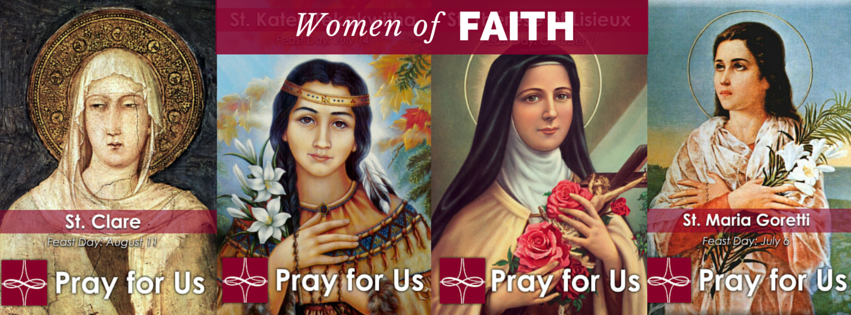

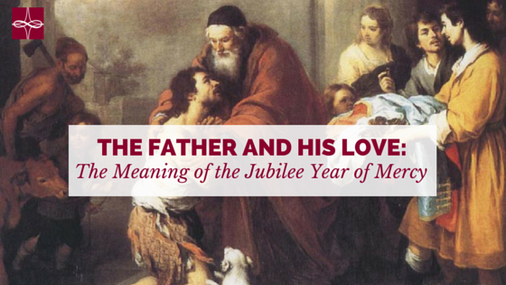



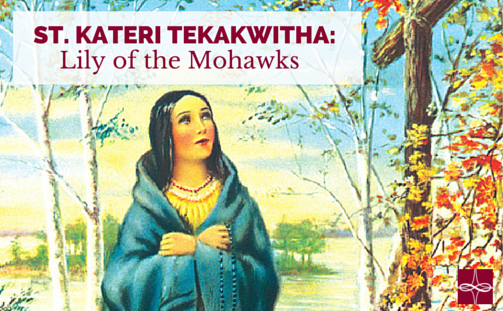

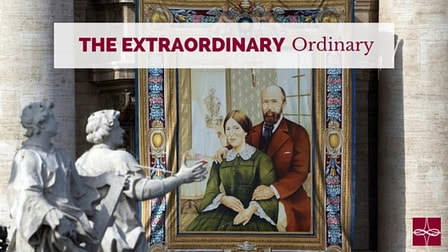

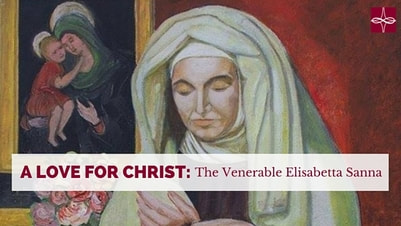

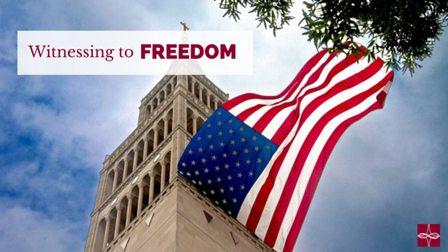

 RSS Feed
RSS Feed